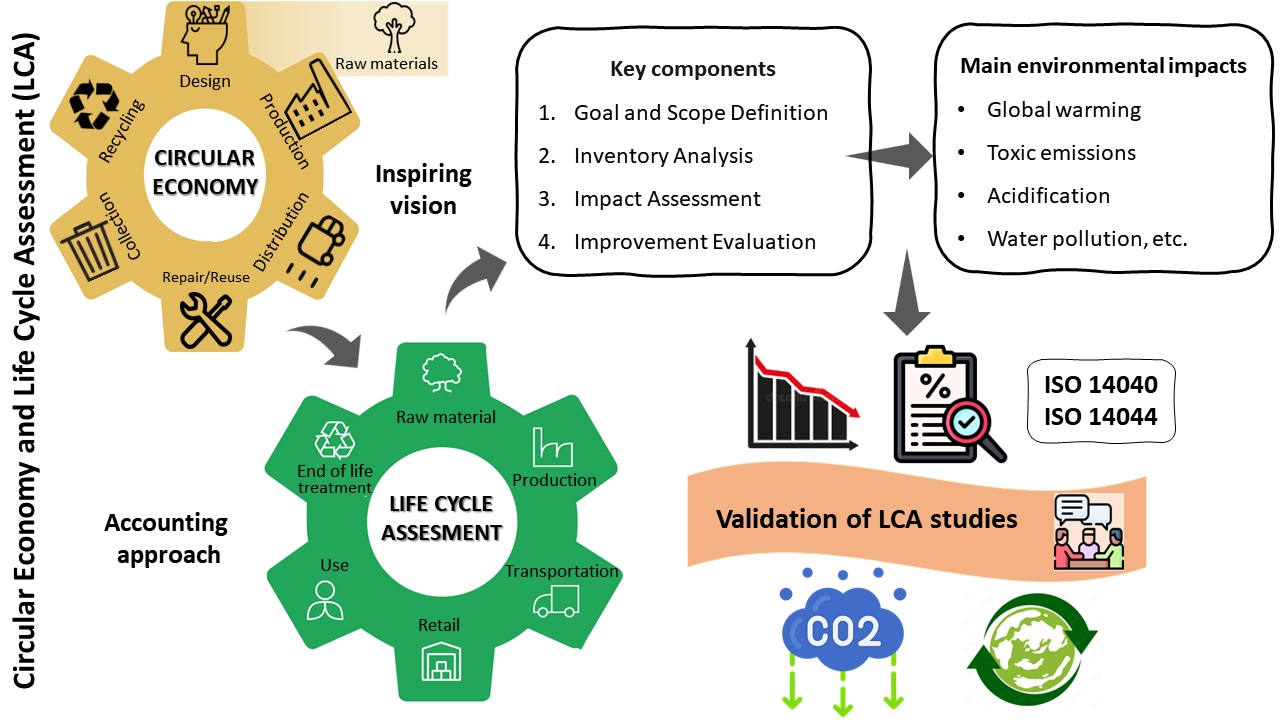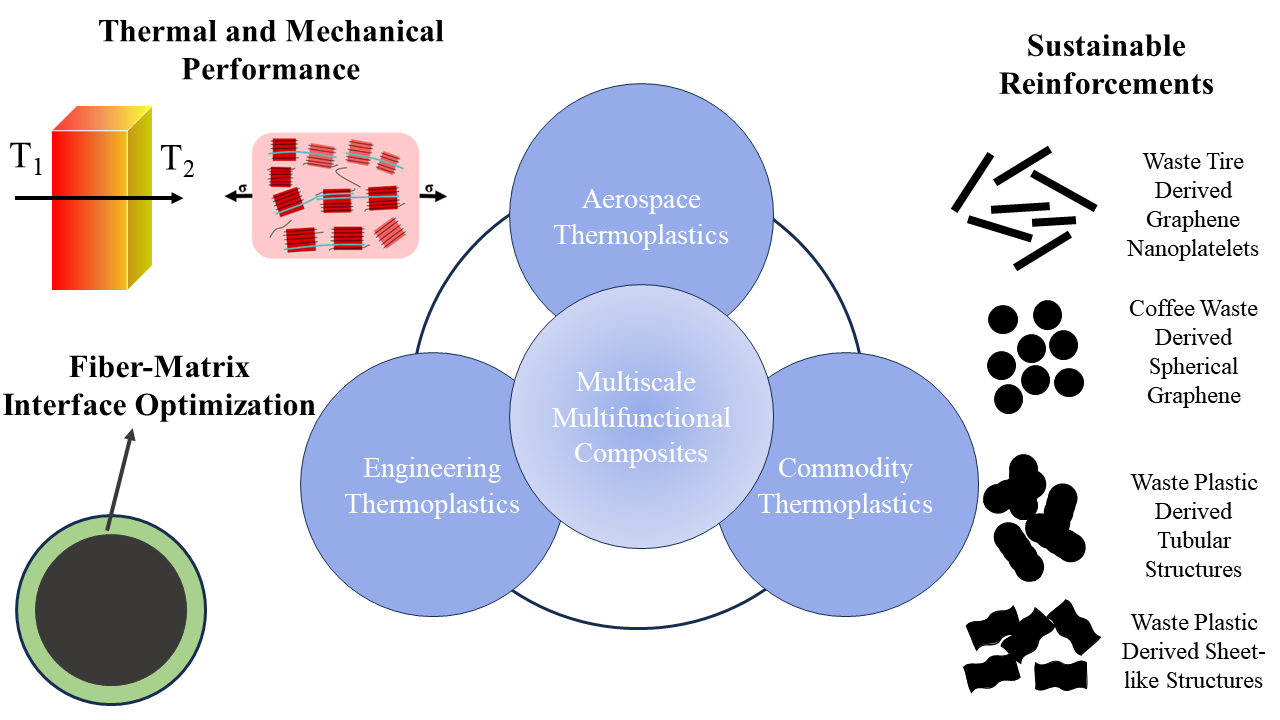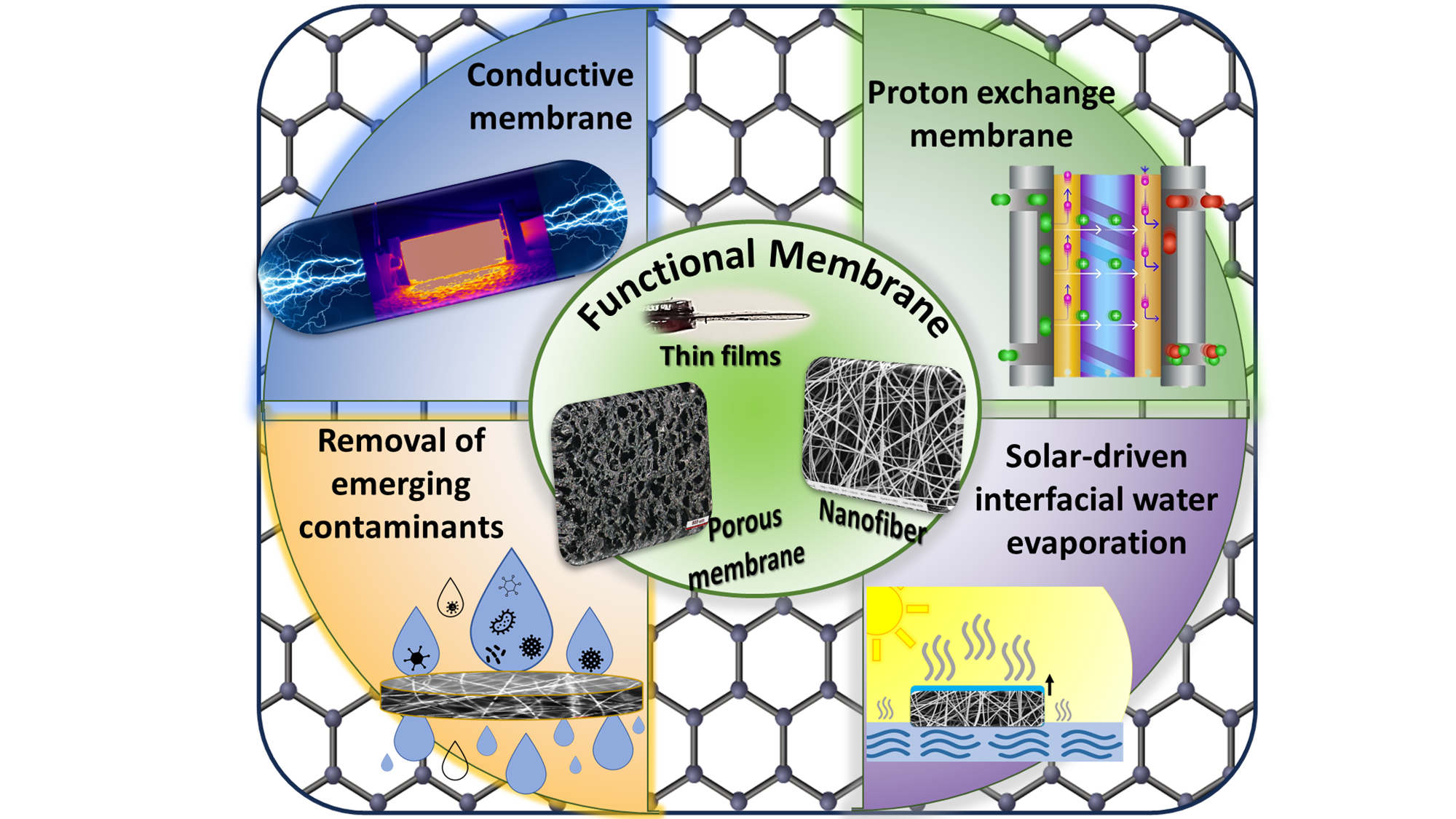Contact
İstanbul Teknoloji Geliştirme Bölgesi,
Teknopark Bulvarı, No:1 34906
Pendik, İstanbul, Türkiye

The research focuses on the development of sustainable nanomaterials, with an emphasis on utilizing waste sources for the production of value-added products, addresses a critical need in the context of waste pollution problem and the urgent necessity for advanced waste management practices aligned with circular economy principles. We aim to achieve this by exploring innovative recycling and upcycling techniques for the synthesis of graphene and its derivatives. These efforts seek to mitigate the environmental impact of waste materials, contributing to the reduction of carbon dioxide emissions that contribute to global warming and climate change. This is achieved by highlighting the potential of waste materials as highly promising carbon feedstocks, emphasizing their recycling and upcycling through pyrolysis techniques. These processes involve the thermal decomposition of carbon chains under controlled conditions, offering pathways to transform waste materials, including plastics, into valuable carbonaceous materials such as hydrocarbons, activated carbon, carbon nanotubes (CNTs), and graphene. The selection of appropriate resources and production routes is crucial, as it directly influences the final properties of the synthesized graphene and graphene-related materials. This research area holds the potential to positively impact manufacturing costs, promote waste reduction, and contribute to a more sustainable and circular approach to materials utilization. We are aiming to not only address the environmental challenges associated with waste accumulation but also to pave the way for industrial-scale production of sustainable nanomaterials.

Functional coatings encompass a range of specialized thin layers applied to surfaces, altering or improving their properties. Various methods exist for this purpose. Dip coating involves immersing a substrate into a coating material solution, facilitating adhesion and forming a thin film upon withdrawal. While effective for uniform coatings, it may require multiple dips for desired thickness. Electrospinning, alternatively, employs an electric field to produce ultrafine fibers, creating coatings with high surface area and precise thickness control. These find use in filtration, sensors, and biomedical devices. Ultrasonic coating utilizes waves to atomize materials, resulting in a mist that uniformly deposits onto substrates, enabling precise thickness control and suitability for delicate or temperature-sensitive materials. Each technique offers unique advantages, facilitating tailored solutions for various industrial and scientific applications. Dip coating specifically aims for uniform, controlled coatings by immersing substrates in liquid, draining excess material, and curing to form a solid coating. Its versatility is evident in applications across electronic, optical, and protective coatings, including nanomaterial applications like Graphene and CNT coating onto fibers, showcasing unique properties and enhancing composite material performance.

The Circular Economy and Life Cycle Assessment (LCA) work hand in hand to drive sustainability in economic and environmental practices. The circular economy's emphasis on waste reduction and efficient resource utilization complements the principles of LCA. LCA, as a systematic evaluation method, examines the entire life cycle of products, processes, or services, offering a holistic understanding of their environmental impact. By integrating LCA into the circular economy framework, industries can make informed decisions, designing products and processes that prioritize resource efficiency and minimize environmental harm. Together, these frameworks synergize to guide sustainable practices, fostering a closed-loop system where products contribute to a circular flow of materials, reducing waste, and enhancing overall environmental sustainability. Following the ISO 14040 and 14044 standards, our LCA studies have been carried out via Simapro software using data from Ecoinvent-3 allocation cutoff by classification (system) & output databases, and energy values calculated from experiments. This tool serves as a valuable asset for ensuring accurate assessments and informed decision-making in our pursuit of sustainable practices. Initial stages define system boundaries, types of impacts, and functional units. LCA employs various impact indicators, including global warming potential (GWP) and climate change. Until now, our research group has conducted comprehensive benchmarking studies on graphene production using various sustainable approaches, and we have also evaluated sustainable compound fabrication and benchmarking studies with commercial compound products.

Multiscale composites and multifunctional composites represent cutting-edge advancements in materials science, each offering unique benefits and posing distinctive challenges. Multiscale composites leverage a hierarchical structure across various length scales, combining materials with different properties to achieve enhanced overall performance. Applications span across industries, from aerospace and automotive, where lightweight yet robust materials are crucial, towards commodity and white appliances, where tailored properties are essential. The importance of multiscale composites lies in their ability to optimize material characteristics, providing tailor-made solutions for specific engineering requirements. On the other hand, multifunctional composites are engineered to exhibit a combination of diverse properties within a single material, offering versatility and efficiency. Multiscale and multifunctional composites often face challenges in fabrication, as creating materials with multiple functionalities demands precision and control. Applications of multifunctional composites are widespread, from structural health monitoring in infrastructure to energy harvesting for sustainable technologies. Their significance lies in the ability to streamline materials for various applications, potentially reducing the need for multiple materials and contributing to advancements in fields such as aerospace, electronics, and healthcare. As materials science continues to evolve, both multiscale and multifunctional composites play pivotal roles in pushing the boundaries of what is achievable in engineering and technology. In this research focus, we tailor properties of the composites through the use of advanced fabrication methods as well as selecting specific matrix and reinforcing materials to provide solutions for the demands of target industries such as aerospace, automotive, and white appliances.

Functional membrane development for energy and wastewater treatment involves the design and creation of specialized membranes that play a pivotal role in various processes. These membranes are engineered to facilitate the separation, purification, and concentration of substances in both energy production and wastewater treatment applications. In energy production, membranes are utilized for tasks like fuel cell electrolytes or in separating gases for carbon capture and storage, aiding in more efficient energy generation while minimizing environmental impact. In wastewater treatment, membranes are instrumental in filtering contaminants, removing pollutants, and concentrating valuable resources, enabling cleaner water release back into the environment. Innovations in membrane materials, structure, and manufacturing techniques continue to drive advancements in this field, aiming for enhanced performance, cost-effectiveness, and sustainability in energy and environmental applications.

İstanbul Teknoloji Geliştirme Bölgesi,
Teknopark Bulvarı, No:1 34906
Pendik, İstanbul, Türkiye


